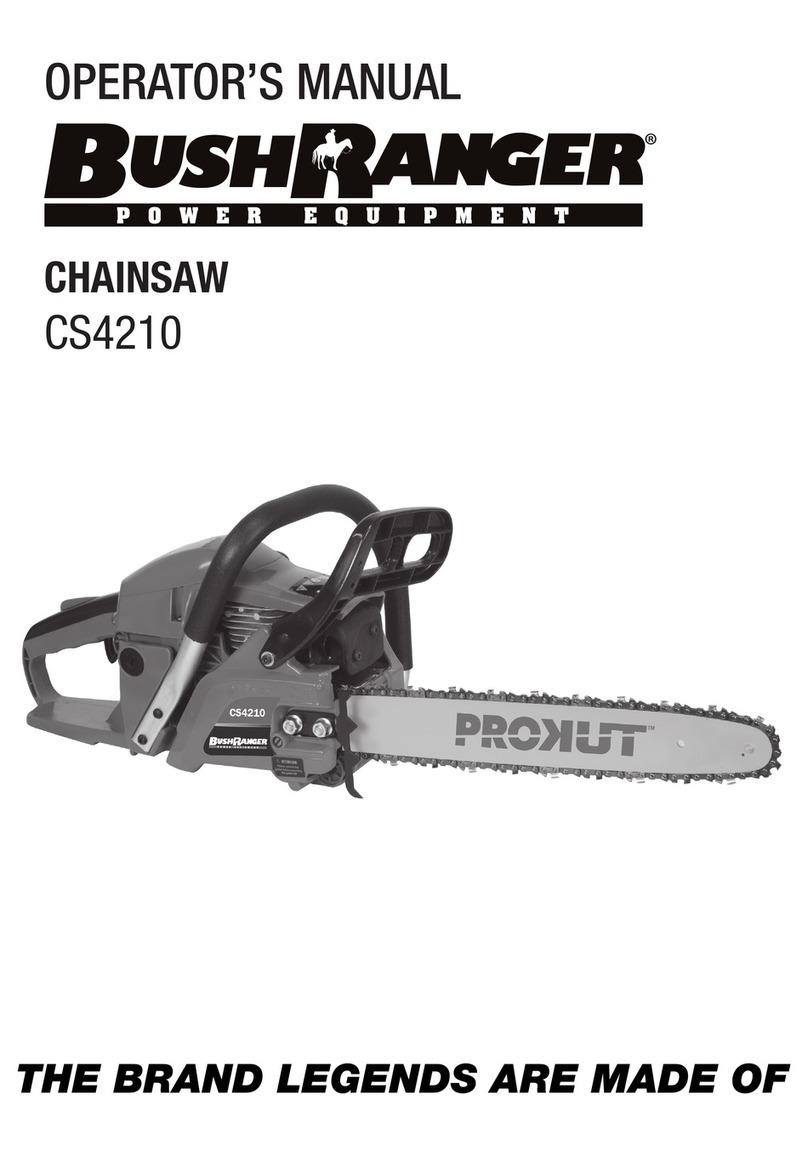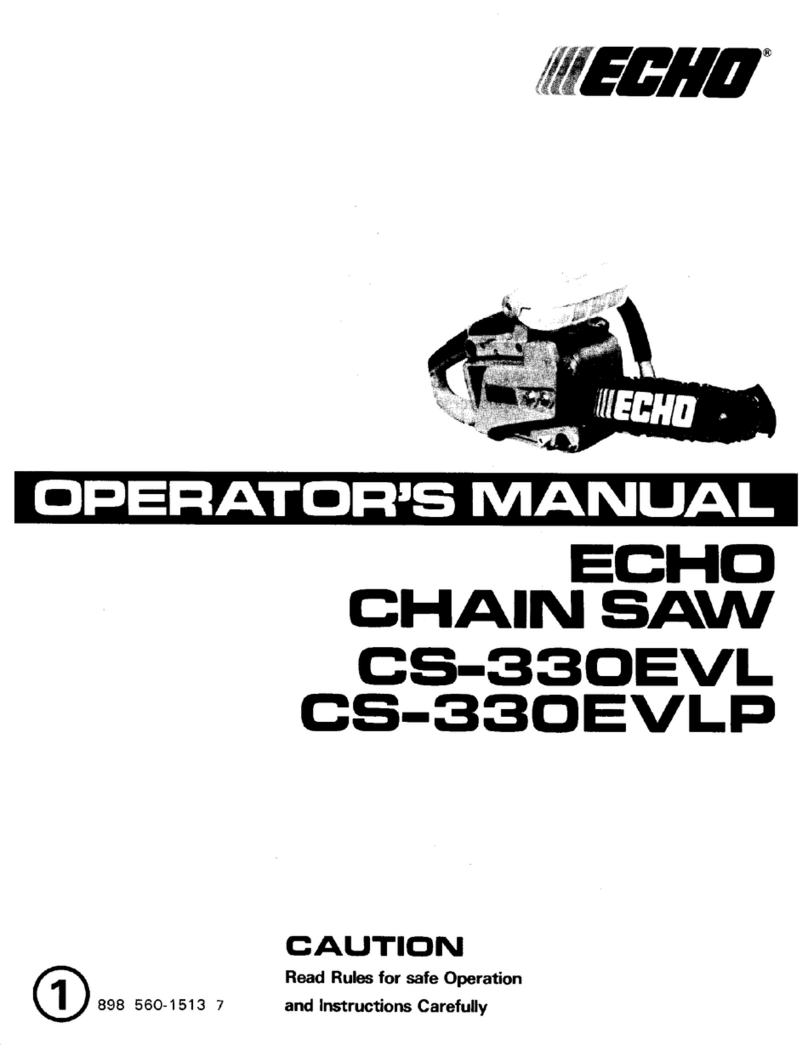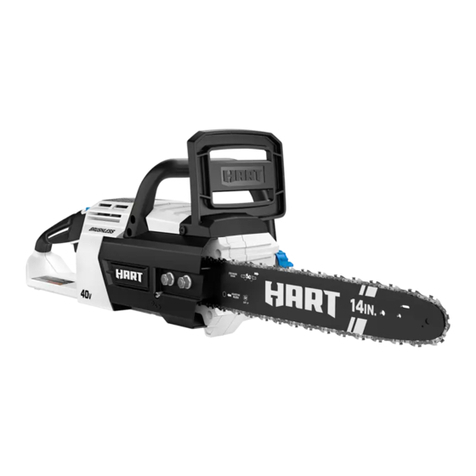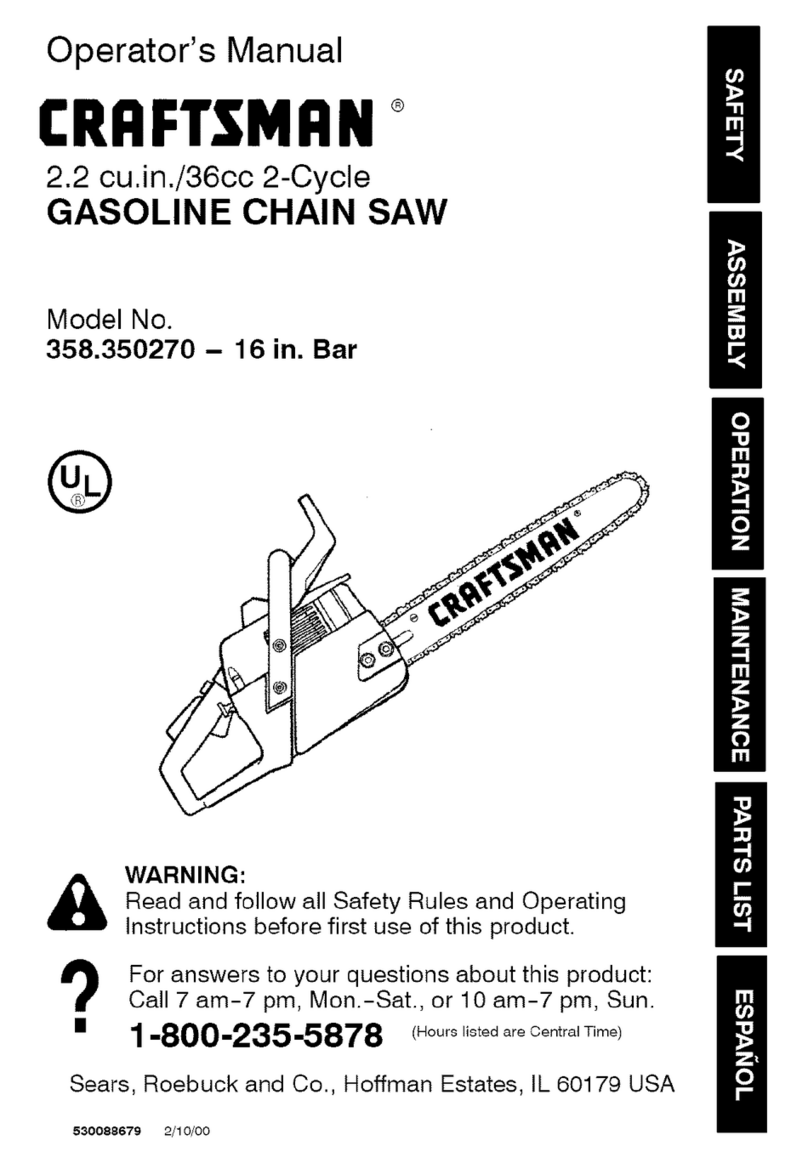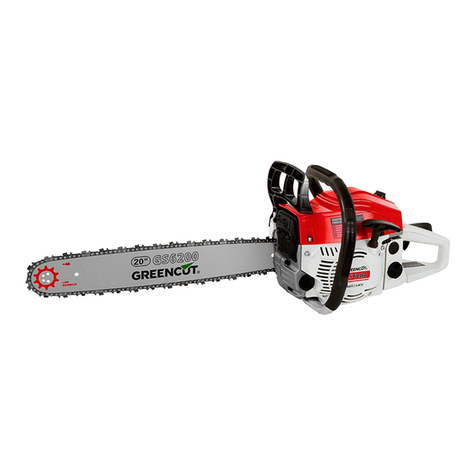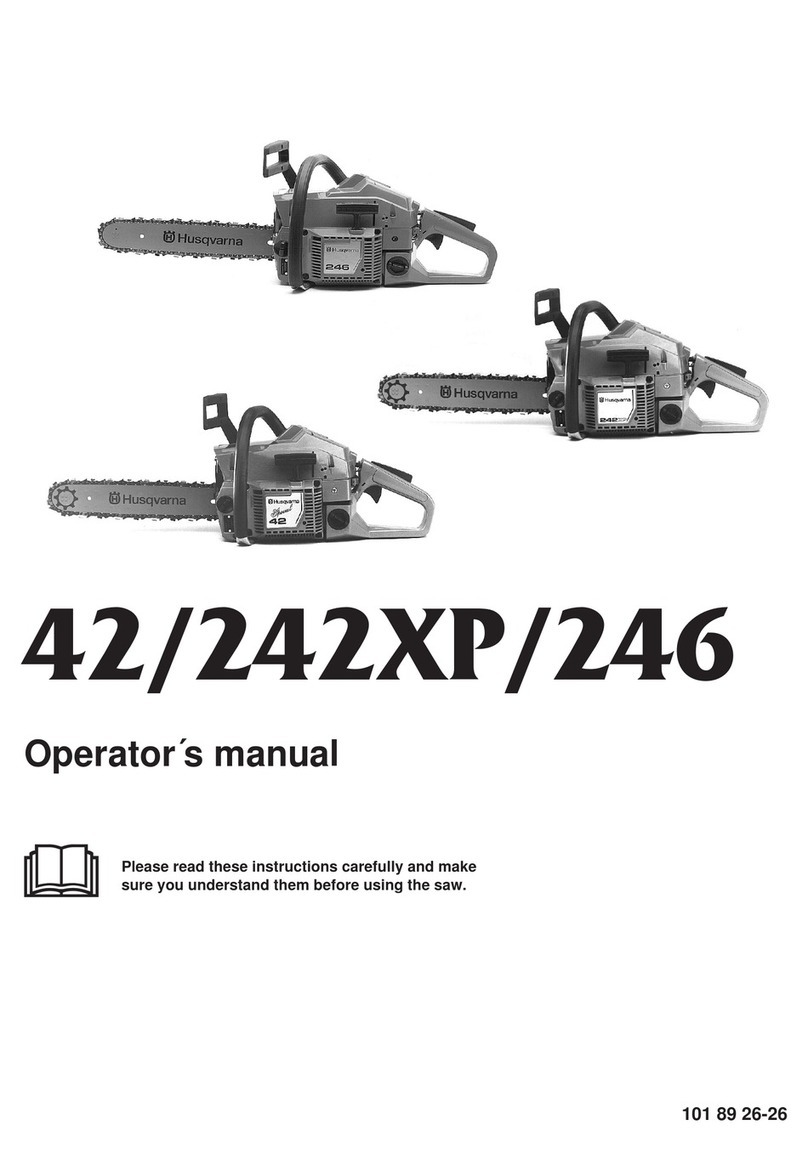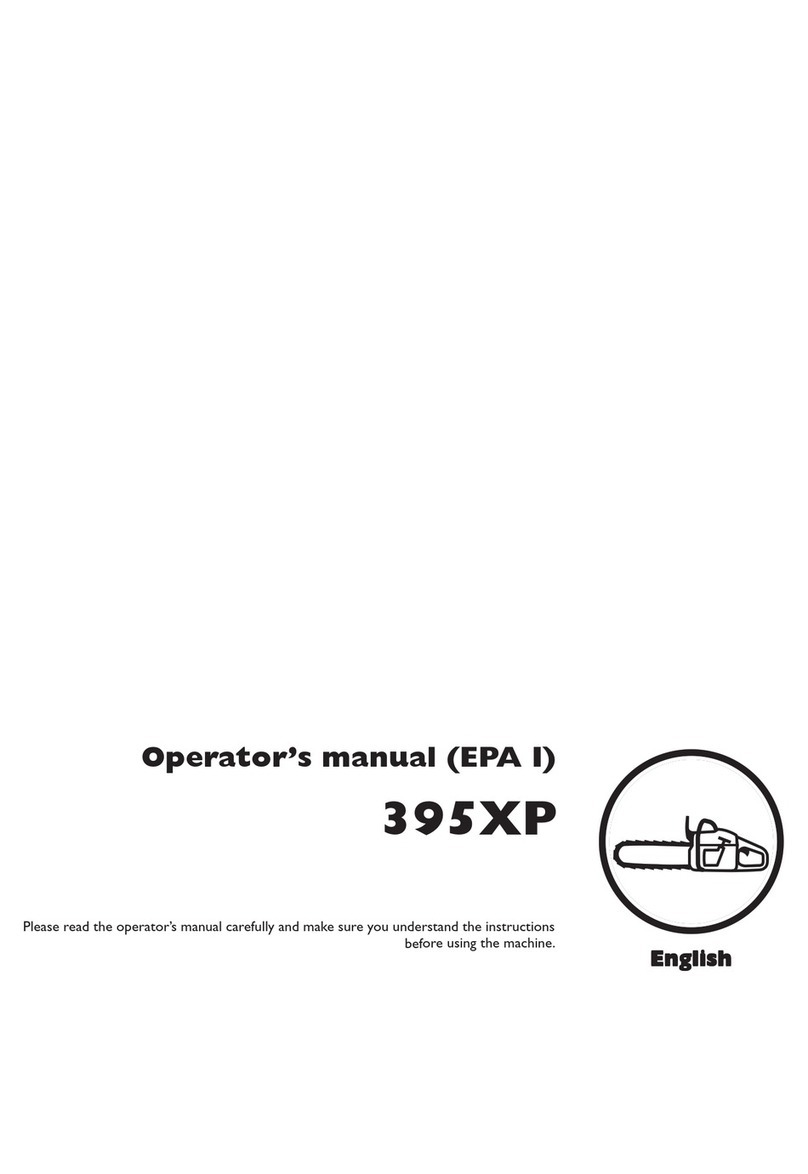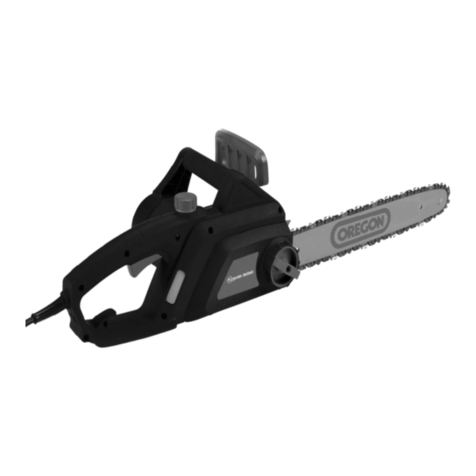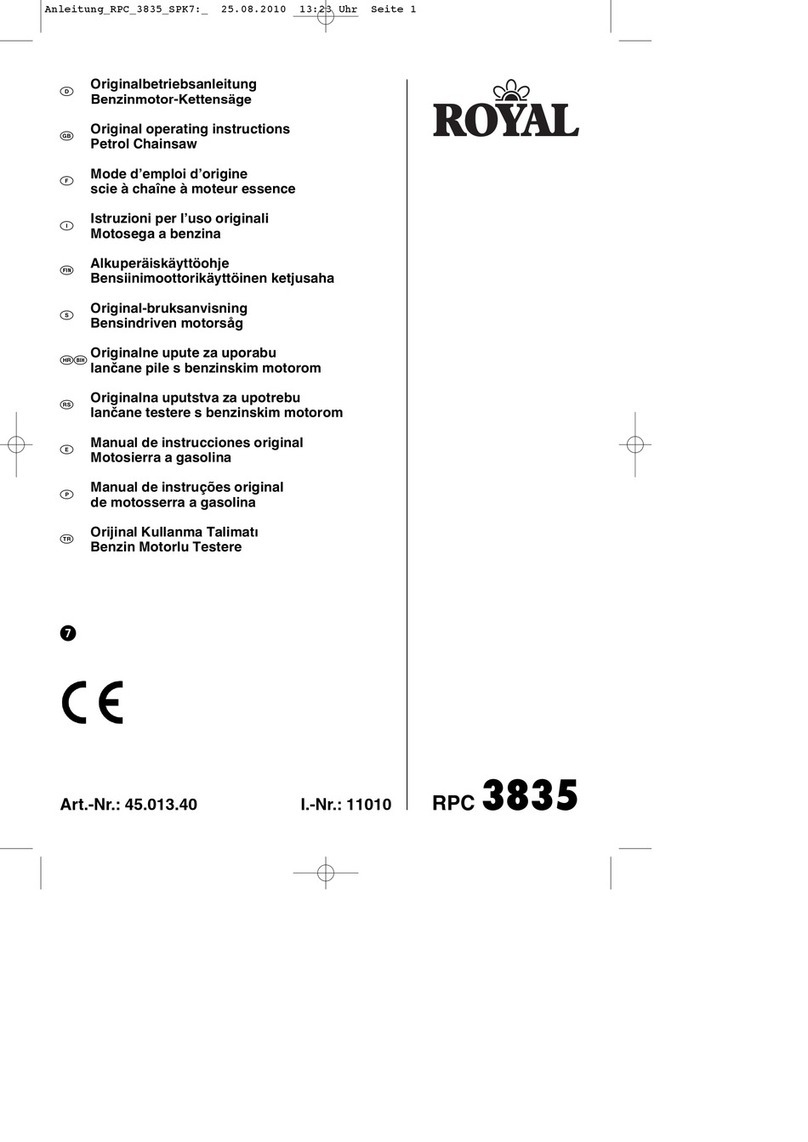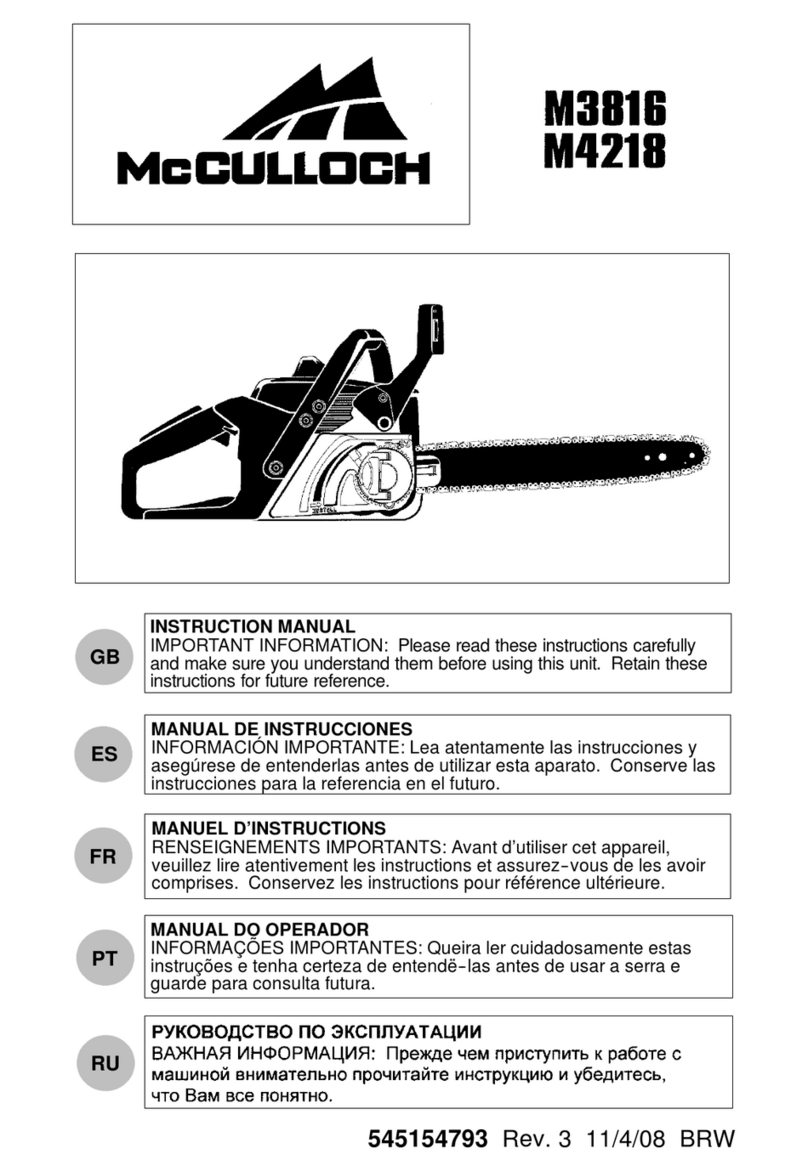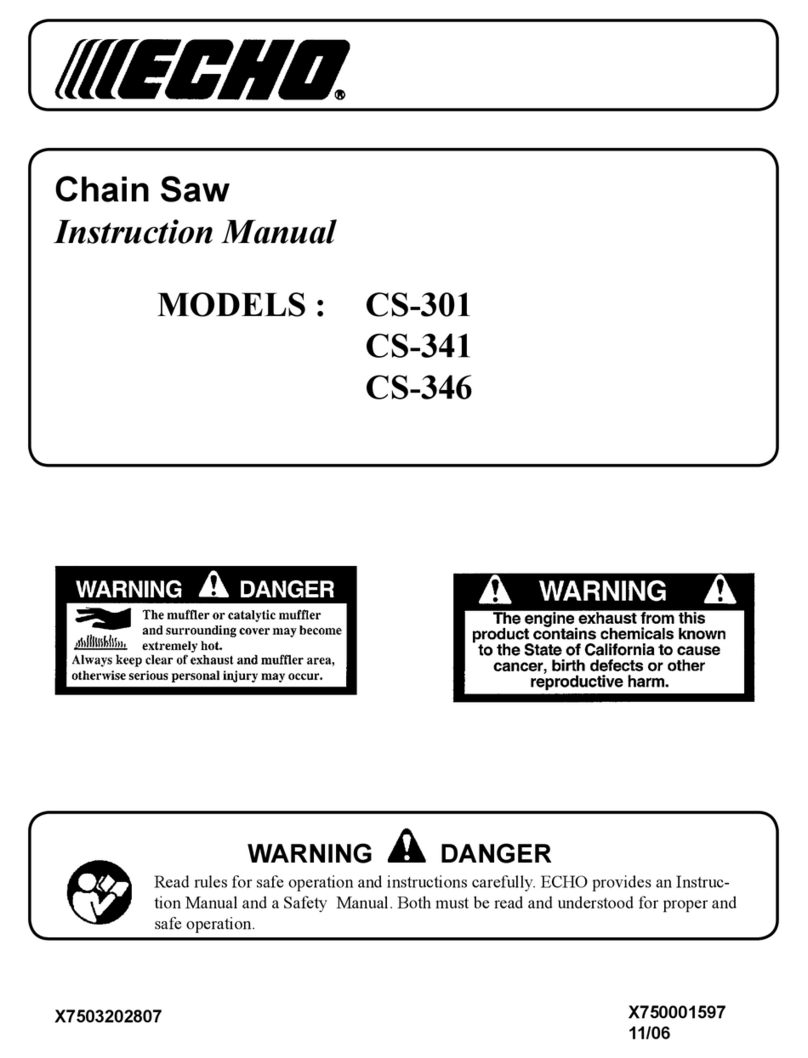model no. 054-5745-0 | contact us: 1.866.523.5218 model no. 054-5745-0 | contact us: 1.866.523.5218
7
Important Safety Information
!
WARNING (Proposition 65): Some dust created by power sanding,
sawing, grinding, drilling, and other construction activities
contains chemicals known to cause cancer, birth defects or other
reproductive harm. Some examples of these chemicals are:
•lead from lead-based paints,
•crystalline silica from bricks and cement and other masonry
products, and
•arsenic and chromium from chemically-treated lumber.
Your risk of exposure to these chemicals varies depending on
how often you do this type of work. To reduce your exposure
to these chemicals, work in a well-ventilated area, and work
with approved safety equipment, such as dust masks that
are specially designed to filter out microscopic particles.
on the front handle. Holding the chainsaw with a reversed hand configuration increases
the risk of personal injury and should never be done.
• Hold the power tool by insulated gripping surfaces only, because the saw chain
many contact hidden wiring. Saw chains contacting a “live” wire may make exposed
metal parts of the power tool “live” and could give the operator an electric shock.
• Wear safety glasses and hearing protection. Further protective equipment for head,
hands, legs and feet is recommended. Adequate protective clothing will reduce
personal injury by flying debris or accidental contact with the saw chain.
• Do not operate chainsaw while up in a tree. Operation of a chainsaw while up in a tree
may result in personal injury.
• Always keep proper footing and operate the chainsaw only when standing on a
fixed, secure and level surface. Slippery or unstable surfaces such as ladders may cause
loss of balance or control of the chainsaw.
• When cutting a limb that is under tension, be alert for spring back. When the tension
in the wood fibers is released, the spring-loaded limb may strike the operator and/or throw
the chainsaw out of control.
• Use extreme caution when cutting brush and saplings. The slender material may catch
the saw chain and be whipped toward you or pull you off balance.
• Carry the chainsaw by the front handle with the chainsaw switched off and away
from your body. When transporting or storing the chainsaw always fit the guide bar
cover. Proper handling of the chainsaw will reduce the likelihood of accidental contact with
the moving saw chain.
• Follow instructions for lubricating, chain tensioning and changing accessories.
Improperly tensioned or lubricated chain may either break or increase the chance for
kickback.
• Keep handles dry, clean, and free from oil and grease. Greasy, oily handles are
slippery, causing loss of control.
• Cut wood only. Do not use chainsaw for purposes not intended. For example: do not








